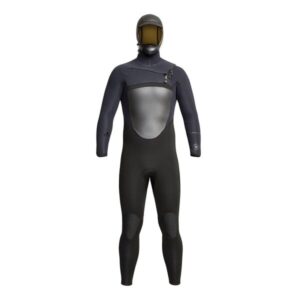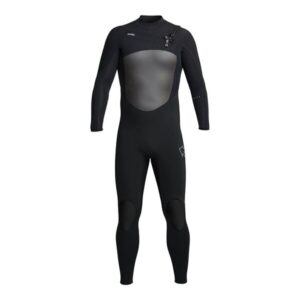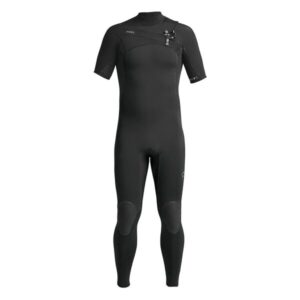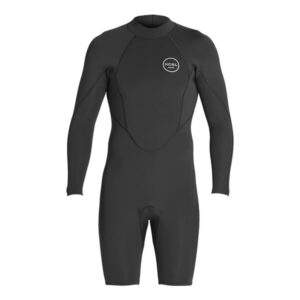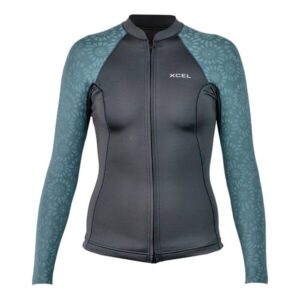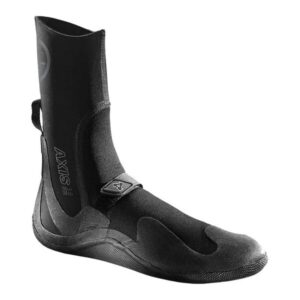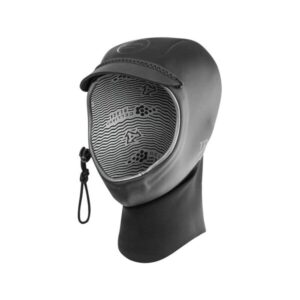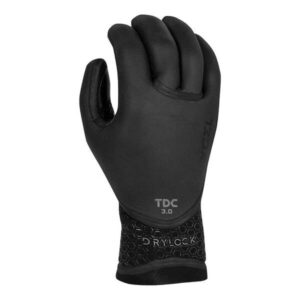Wetsuit types for surfing

Contents
wetsuits for surfing
There are many different types of surf wetsuits, all made for various conditions and for different body sizes. We will have a quick look at several types of wetsuits for surfing, explain how they differs, and how to choose the best wetsuit for your situation.
The most common surf wetsuit types are:
In colder conditions you may need:
There are many things to keep in mind when choosing a wetsuit for surfing. These include; thickness in mm, zipper or zip-free, flexibility, quality of rubber, and the treatment of the internal seams, to name a few.
Surfing wetsuits generally come in different thicknesses, varying from 2mm to 5mm, in various configurations. They also come in rubber and nylon configurations. The nylon is used where flexibility is needed, and the rubber is used where warmth is required. The shoulder and armpit would be generally made of nylon because of all the necessary movement when paddling. In contrast, the chest and back area is often made up of rubber panels.
There are also zip options, being the standard back zip, the front chest zip, and the zip-free option. All have different reasons, and the front zips are shorter and therefore warmer, while the zip free is possibly the most snug.
This is the warmest conventional wetsuit type, made with a built-in hood. A full suit hooded is built for cold conditions, where you want no leakage around the head and neck area. The hood is made into the wetsuit to prevent leakage.
This suit usually comes in 3mm, 4mm, and 5mm configurations, sometimes up to 6mm if you’re surfing in the Arctic Circle, which is happening more and more these days. These wetsuits are less flexible than their thinner counterparts, but make up for it with maximum warmth.
The most common wetsuit type, is the full suit or steamer. It comes with long arms and long legs, and comprises 2mm and 3mm sections, with some warmer suits made up of 4mm panels.
The steamer can be used in most surf conditions, and the 4mm option is super warm, while the 2mm steamer is super flexible but less warm. For most surfers, the steamer is essential for your regular sessions and it is the most popular wetsuit world-wide.
This surf wetsuit is designed for warmer water and is excellent to beat the wind chill. It generally comes in a 2mm option, and with the short arms is ideal for paddling. It will not keep you warm when the water is cold, but it offers excellent flex.
This wetsuit type, comes with long legs and no arms and is generally used for warm water conditions as there is water flow through the suits. Some people love this specialty suit while others find it less practical than a short-armed full suit.
A spring suit is a wetsuit that doesn’t provide full coverage at all. It is generally accepted that a spring suit has short arms and short legs, but some of them have short legs and no arms, and there is a version that has short legs and long arms.
Spring suits are for warm water, and they provide for maximum flex while offering average warmth. A spring suit serves to protect the user from rash and keep off the sun and keep the wind chill right down. Even when the water is warm, surfers often choose to surf in a spring suit for those very reasons and prevent cuts and scrapes when surfing over shallow reefs.
The more popular suit of the moment is the long-sleeved short leg wetsuit for women. The legs are short, as short as a costume, and the sleeves are long. Many girls use these wetsuits to keep off the chill and the sun but have the flexibility of surfing in a swimming costume bottom.
Also popular at the moment in warmer climes, men and women are using long-sleeved jackets and a pair of boardies or bikini bottom to keep the wind chill off, protect against the sun, and have the flexibility of a 2mm suit while keeping warm in the process. Generally for warmer conditions when a costume would suffice, but when a jacket might mean that you could surf a little bit longer and not feel that wind chill.
Surf boots are an essential item when the water starts getting colder as they keep your feet warm, and your feet make contact with the surfboard.
Boots come in many different versions from 2mm to 5mm and split toed, or conventional. The split-toe is excellent for gripping your board as it provides that little bit more grip, and a 2mm boot is for when the water is warm, but there is cold wind. In cold conditions, you need a 5mm boot at least.
Surf hoods are another essential item, and there are several options. Generally, a hood is 3mm thick and is either closed with a drawstring or with Velcro. Some hoods come with a longer neckpiece or nape, and they are the warmest but are less flexible.
Surf gloves are only for when the water is icy, and the wind is biting. They are a great addition to warmth, but some find them cumbersome to surf with, particularly when taking off and popping up off the rails.
Surfing wetsuits are essential for most sessions. Even in tropical conditions like Indonesia, there are wetsuit jackets, spring suits, and long-sleeved short-legged women’s wetsuits.
Buying the best wetsuit type for your personal needs is essential. Some wetsuits are more expensive than others, while others endure longer than others.
The best wetsuit brands for surfing
Surf Wetsuit FAQ
A 2mm wetsuit for warmer water, and 5mm panels for colder water, and all the configurations in between
Steamers vary between $200 and $400, depending on the thickness, seam treatment, and other optional extras.
A little bit of personal choice comes into it, but Xcel wetsuits consistently win the SIMA Wetsuits Of The Year awards. Other consistent finalists are Rip Curl, O’Neill, and Vissla.
